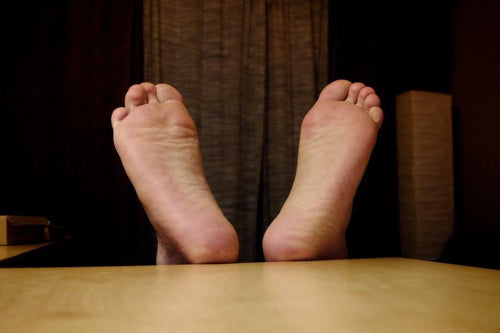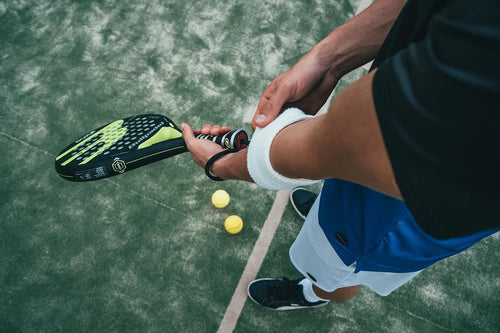Whether you’re walking through a marshy trial or trekking high mountains, shoes are the most critical part of your hiking gear. Without proper boots to complete your attire, your feet will get wet and uncomfortable.
Your shoes should have reliable waterproofing features to keep your feet fresh and active. That’s the only way to cross streams and marshes with ease. However, moisture isn’t only an outside threat.
Your sweat along the long hikes will get your feet wet in no time, especially if you’re using highly waterproof materials such as leather or rubber. That’s where breathability comes in. Apart from waterproofing, you’ll need shoes that are breathable enough to let excess moisture out.
But are waterproof breathable shoes a reality or just a myth? Let’s find out!
What are Waterproof Shoes Exactly?
Waterproof shoes are the ideal footwear to put on if you’re traveling in wet conditions. These shoes are designed to keep outside moisture out, keeping your feet fresh and dry.
When it comes to waterproof shoes, there are different levels of waterproofing ability. It all depends on the material. Some boots may provide 100% water resistance, while others may only work to a certain degree.
There are lots of popular waterproof materials you may come across while looking for the perfect pair of hiking shoes. Shoes labeled with eVent, GORE-TEX, or TimberDry usually have a reliable water resistance level.
Picking the Right Waterproof Shoes
Brands like Loom Footwear include staunch moisture-wicking exterior linings and an interior mesh coating to provide excellent water resistance and breathability.
If you know the trial you’re going to take up with your shoes, you can easily choose the ideal water resistance level for yourself.
|
Resistance Rating |
Resistance Level |
Performance Under Water Pressure |
Useful In Situations |
|
20,000 mm+ |
Completely water-resistant |
Excellent |
Useful in heavy rainfall and wet snow |
|
16,000-20,000 mm |
Highly resistant against rain and water |
Good |
Can be used in heavy rains and wet snowfall |
|
11,000-15,000 mm |
Good resistance against water and rain |
Average |
Best for medium-level snow and rain |
|
6,000-10,000 mm |
Provides resistance against water and rain |
Poor |
Great for use in light rain and snow |
|
0-5,000 mm |
Very little water resistance |
Poor |
Ideal for slightly rainy situations only |
However, as we mentioned, getting highly waterproof shoes is not the end of the story if you’re looking for ideal hiking boots. The higher the water resistance, the lower the breathability gets.
Therefore, by only checking out waterproofing levels, you might miss out on breathability, which is equally important. Loom Footwear produces one of the best waterproof/breathable shoes because they combine waterproof exteriors with absorbent linings to tackle internal moisture.
Before you decide, let’s find out what breathability is and why it is essential in hiking boots.
What is Breathability?
Think about it: You’re planning out an extensive hike in mountainous terrain. You’re all set to keep going for hours at a stretch, and in the first two hours, your feet get drenched with sweat.
Not so motivated to complete the long run now, are you?
You can avoid this situation if your shoes are breathable. Breathable fabrics are not only used in shoes, but in different kinds of apparel such as jackets, shirts, and innerwear as well.
It is safe to say that breathability is the direct opposite of waterproofing. Water-resistance is recorded according to the level of water the material keeps out. On the other hand, breathability is a measurement of how much moisture the material lets out.
Besides that, the ideal breathable textile will stay dry after filtering out excess moisture from the inside of your shoe. The amount of water that passes through the material every 24 hours is a measurement of how breathable it is.
|
Gms of Water Passed in 24 Hours |
Breathability Level |
|
Less than 5000 |
Poor |
|
5000-10000 |
Average |
|
10000-20000 |
Good |
|
More than 20000 |
Excellent |
There are different kinds of breathable materials used in various brands of shoes. For example, Loom Waterproof Breathable Sneakers uses an absorbent 3D-mesh lining combined with Cosmo mesh that keeps your feet from getting sweaty.
How is Breathability Created in Waterproof Shoes?
Now that it’s clear water resistance and breathability are poles apart, how do brands manage to combine both aspects in their shoes?

The trick lies in the fabric. Waterproof breathable shoes are made using materials that let water vapor escape from the inside while resisting water from the outside.
Previously, solvent-spraying methods were used to make breathable shoes waterproof. However, considering the environmental damage of these solvents, most people don’t prefer using them.
On the other hand, solutions like moisture vapor control and multi-layer construction are better and more efficient for creating waterproof and breathable shoes.
The basic technique is using two layers. The outer layer usually consists of leather, GORE-TEX, or eVent and acts as a moisture repellent.
The inner layer consists of a soft fabric membrane with pores that let water vapor out and keep large water droplets away.
This way, your feet won’t get sweaty and stay dry despite wet conditions outside.
Why Use WaterProof Breathable Shoes?
Waterproof breathable shoes are a necessity for athletes and outdoor lovers, especially during hot weather.
Sweat accumulation inside your shoes for extended intervals can lead to foot fungus like Athlete’s foot, and cause rashes and redness. It’s better to get yourself checked if you face such symptoms. Otherwise, the symptoms can get worse, resulting in severe foot damage.
These shoes are not necessary for everyone, though. If you have an athletic and active lifestyle, consider keeping a pair or two of waterproof breathable shoes. You will also need them while traveling in a hot climate.
Conclusion
Did you figure out how important waterproof and breathable shoes are? Your hiking gear is incomplete without shoes that provide proper water resistance and reliable breathability. You need something that can keep you going while playing football in hot weather.
Brands like Loom Footwear give you high-quality water resistance and breathability combined with cushioning and lightweight exteriors. Happy Hiking!
Stay Dry, Feel Fresh: Discover Loom's 100% Waterproof and Breathable Shoes!





